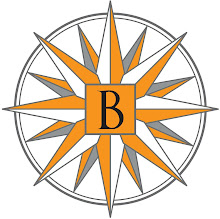 Point Pinos by Gerald C. Hill, from forthcoming California & Hawaii Lighthouses: Illustrated Map & Guide.
Point Pinos by Gerald C. Hill, from forthcoming California & Hawaii Lighthouses: Illustrated Map & Guide.On January 4, 1856, Charlotte Layton became the first official female head lighthouse keeper on the West Coast. She was appointed to the job at Point Pinos, CA, held by her late husband, which she'd been doing for some months--along with caring for their four children. Charles Layton had died the previous November, after being shot as part of a sheriff's posse that tried to capture outlaw Anastacio Garcia. (Garcia was arrested in October 1856 and lynched in the Monterey jail four months later by his "friends.") Charlotte married her assistant keeper in 1860, whereupon they traded jobs. They were gone by 1863.
From Morris Island Lighthouse, SC (then known as Charleston Light-station):
The keeper further reports that a light shock of earthquake occurred on January 4, 1887, at 6:45 a. m., of about twenty seconds duration, accompanied by the usual rumbling noise. It had, apparently, a horizontal motion. It was pretty well felt in the town, but did no damage.From the Annual Report of the Light-House Board for the Fiscal Year Ended June 30, 1899 (note the chain of transmission!):
...Congress authorized that C. K. Marr and E. H. Pierce, keepers of the Cuckolds, Maine, fog-signal station, accept each a silver watch awarded to them, respectively, by the government of the Dominion of Canada, in recognition of their services in rescuing the captain and crew of the schooner Aurora, of Harboursville, Nova Scotia, on January 4, 1896.
The watches were forwarded to the State Department by the British Government, which transmitted them through the Treasury Department to the Light-House Board, by which they were delivered through the inspector of the First light-house district to the specified lightkeepers, and their receipts for the watches were transmitted to the government of the Dominion of Canada through the same channels.











